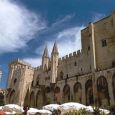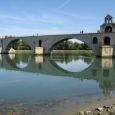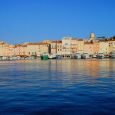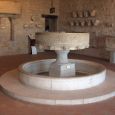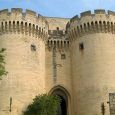Avennio
Advertisement
By Air
Marseille Provence Airport is the nearest major airport to Avignon and is situated 80kms southeast of the city. It’s a two-terminal facility providing connections with major EU and international destinations such as Amsterdam, Barcelona, Brussels, London, Milan, Munich and Paris. The airport is reasonably well served by ground transportation options, with shuttle buses and taxis on hand offering connections to various destinations in the Provence region. The Caumont Avignon Airport is closer at only eight kilometres away and offers limited connections.
By Rail
Rail services from La Gare TGV station, situated a couple of miles south of the city centre, provide connections between Avignon and Paris, with an average journey time of around 2 hours, 40 minutes. Buses connect the city centre with the rail station. From Paris, you can make connections to a variety of destinations including Lille, Nantes, Rouen, Brussels and Geneva.
By Bus
International bus services from destinations such as Brussels, Morocco, London, Prague, Italy and Spain are provided by Linebus and Eurolines, and run to Avignon’s Gare Routière coach station, located on boulevard St Roch. Services are generally speedy and reliable. Regional connections are also available to towns such as Carpentras, Cavaillon, Aix, l’Isle/Sorgue and Nîmes.
By Car
From Paris, Marseilles, Lyon, Nice and Italy and destinations north of the city you can take the A9 motorway to within seven kilometres of the city centre and then follow the signs. From Nîmes, Perpignan, Barcelona and destinations south of the city, you can take the A9 motorway to within six kilometres of the city centre and then follow the signs. From Marseilles, you can expect to make the journey in about 1 hour; from Paris, in about 6 hours and from Barcelona in approximately 3 hours, 45 minutes.
Palais des Papes
The Palace of Popes is the city’s most historically significant construction, dating back to the time when Avignon replaced Rome as the papal residence and saw a gathering of schismatic cardinals attempt to overthrow the authority held by others in the Italian capital. The Palace is made up of a number of buildings and guided tours are available that take in such highlights as the pope’s bedchamber, Chapelle St Martial, the pope’s antechamber, the stag room and the grand tinel. If you’re holidaying in the summer season, it’s best to visit the palace in the late afternoon, when the weather’s not so hot and there are fewer tourists.
Pont St Bénézet
The bridge to St Béneezet (Provençal for Benedict) in Avignon is well-known because of the following legend attributed to it: it is said that in the year 1177 the shepherd Bénézet was instructed by the angels to build a bridge over the Rhône. The town fathers and citizens both mocked the idea, but he was given the strength to raise a giant lump of rock, which they then recognized as being a sign from God, further evidenced by the fact that the bridge was built in only eight years.
La Fondation Angladon-Dubrujeaud
Open since 1995, this museum is home to the private art collection of the famous Parisian haute couture designer, Jacques Doucet. The works include those by famous artists such as Picasso, Duchamp, Braque, Max Jacob and Guillaume Apollinaire, who Doucet paid personal attention to and helped encourage the development of their talents. The museum features Doucet’s former living quarters, within which visitors will find many rare antiques and objets d’art including Louis XVI chairs, designed by Max Jacob, and some original 16th century Buddha icons.
Muse Lapidaire
At Musée Lapidaire, visitors will find a 17th century Jesuit church built in the Baroque style that has now been converted into a museum displaying a modest collection of Gallo-Roman sculptures. Various other artefacts tell something of the history of the Provence region, while some ancient sarcophagi and examples of funerary art are also available for viewing.
Fort St André
From Fort St-André with its two mighty round towers, built in the second half of the 14th C by John the Good and Charles V, there is a magnificent view of Villeneuve, Avignon, Mont Ventoux and the Lubéron and Alpilles mountain ranges. The massive walls enclose the little town of St-André, a Benedictine monastery and the Romanesque Church of Notre- Dame-de-Belvézet.
Information not available


